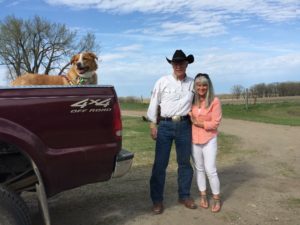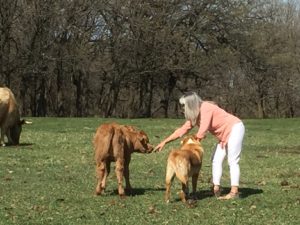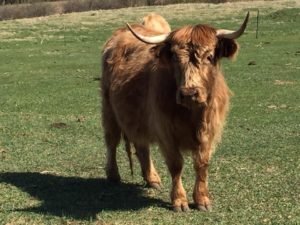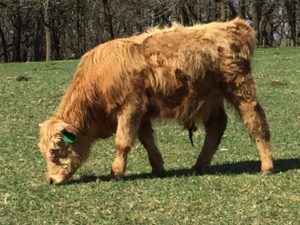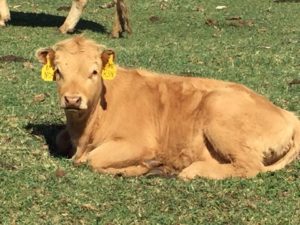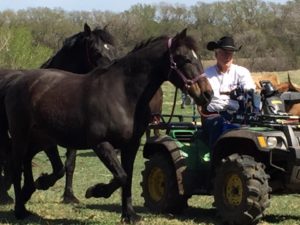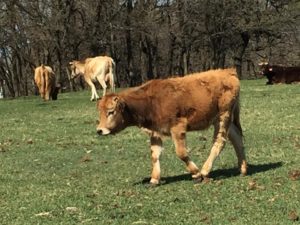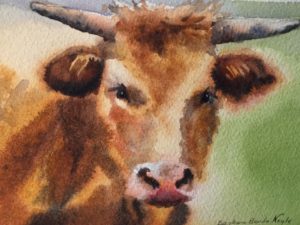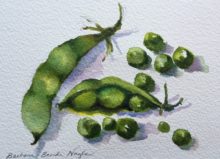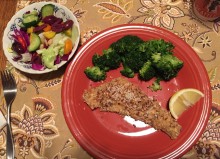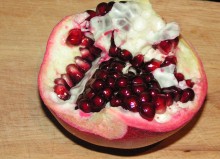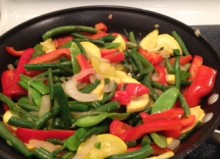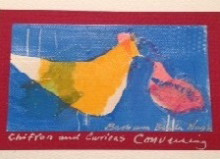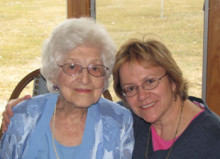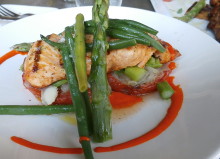HighMont Beef – a North Dakota Treasure for Heart Health
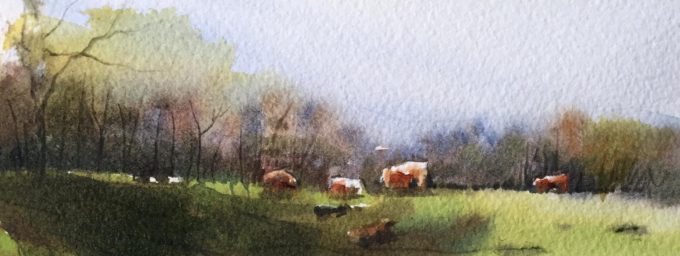
Do you enjoy the taste of beef, but worry about the saturated fat and cholesterol content? Look no further than the Red River Valley Ranch in Walhalla.
Recently, my artist twin sister Barb, her husband Paul, and I took a road trip up to Walhalla. We had 3 agendas: do a little hiking in the Pembina Gorge, visit the Brunch Bunch Art Show, and visit Ed and Connie Jonas, owners of the Red River Valley Ranch.
I met this delightful couple not long ago. After briefly meeting them, I was soon having coffee with them and learning about their ranch. When Ed found out I was a Licensed Registered Dietitian, he was eager to tell me about the difference between his beef and “regular beef.”
The Jonases have created a low-fat, low-cholesterol meat called HighMont Beef by breeding together two types of cattle: the Scottish Highlander and the Italian Piedmontese. (Think “high” for Highlander, and “mont” for Piedmontese.) They started this operation back in 2003 in Montana, and 1.5 years ago, moved it to Walhalla for the rich soil and grazing land. When I asked if I could taste it, I was invited to lunch and for a tour of the ranch.
Ed grilled burgers for us, and to truly taste the meat, I decided to forego catsup and mustard. I asked Ed for a “well-done burger” and the look on his face was that of a chef who cringes in the kitchen when such an order is made. He was concerned it would change the flavor too much, but I didn’t budge so he delivered a well-done burger with fried onions on a homemade oatmeal bun made by Connie. My brother-in-law Paul took his more rare. My sister, a non-beef eater, declined the meat, but enjoyed the rest of the meal. As I searched the sky for words to describe the meat, she kept asking “Well? How does it taste? You look like you have never eaten a burger before.” She was right. I have never eaten a burger like this before. The beef was tender even though well-done, and had an amazing earthy taste to it. It wasn’t stringy or crumbly or tough. It was simply “delicious and amazing.”
I can understand why they call it “buff beef.”
As an RD, I was impressed. I hear about the “cardboard” taste of many foods that are low in fat. This meat was not tough, even when served well-done, and it had a flavor that was better than any meat I have tried. I tend to not focus on cholesterol content when discussing heart healthy meals. Since it is saturated fat in food that tends to raise our blood cholesterol, I put my focus there. Here’s the profile of HighMont Beef compared to other types of meat. Note that in a 3.5 oz. serving, total fat is 8.8 grams fat in HighMont Beef compared to 24 grams of fat in regular beef and 23 grams of fat in pork. The saturated fat content is at 2.38 grams compared to 10 grams and 8 grams of fat in beef and pork respectively. Saturated fat is the main culprit in impacting blood cholesterol in the diet. Some people think cholesterol content raises blood cholesterol, but actually it is saturated fat. All animal cells contain cholesterol, so of course, all animal products would contain it. For the record, HighMont Beef has lower cholesterol than beef, pork, chicken and fish. Its nutriton profile is a winner!
| Per 3.5oz Serving | Calories | Calories From Fat | Total Fat (G) | Saturated Fat | Cholesterol (MG) | Protein (G) |
| HighMont | 161 | 73 | 8.8 | 2.38 | 30 | 20.72 |
| Chicken | 119 | 27.72 | 3.08 | 0.79 | 70 | 21.39 |
| Beef | 287 | 212.04 | 23.56 | 10.1 | 70 | 17.54 |
| Pork | 275 | 202.5 | 22.55 | 8.17 | 72 | 16.74 |
| Turkey | 110 | 14.22 | 1.58 | 0.53 | 73 | 22.32 |
| Salmon | 116 | 31.05 | 3.45 | 0.56 | 52 | 19.94 |
| Swordfish | 121 | 36.09 | 4.01 | 1.09 | 39 | 19.8 |
What is most striking about Ed and Connie Jonas of the the Red River Valley Ranch is their high respect for their animals. For example,
- The cattle are fed an all-natural diet of oats, flax, and mineral water. They also have access to straw mounds, and allowed to roam freely on the chemical-free grass and hay.
- Despite having around 50 cattle, Ed knows each one by name. There’s Pretty Girl and Pretty Woman. Then there’s Flash and her calf Bulb. Onto Percy, Gus, Nutmeg, Dulce, and the Christmas calf, Noelle. As more cattle roamed around, we met them each by name.
- The bulls are allowed to choose their own “girlfriends, and they mate naturally instead of a forced environment. The cows are encouraged to nurse their young and enjoy the beautiful outdoors as a family. The males are assessed for size, and “confirmation,” as determined by the length of the back. The longer the distance between head and tail, the better. Those with less than ideal confirmation are castrated and turned into “steers.” After 27 months, these steers are candidates for processing. While this may seem harsh, keep in mind that many cattle who are fed growth hormones have a much shorter life.
- Due to having a relaxed environment, these cattle are not stressed, like many cattle. Ed said “stressed” meat tastes bad. We walked amongst them with hardly a stir of a reaction. (We knew better than to approach a calf, though… Mama Cow would not like that!)
- Once the steers are processed for meat, Ed and Connie personally deliver it to buyers. This is cheaper than shipping it commercially, and gives them an opportunity to know their customers.
For more information on the Red River Valley Ranch, formerly known as the Blacktail Mountain Ranch, or to order beef, please visit http://www.blacktailmountainranch.com/blacktail-mountain-ranch-nutrition.html
Watercolors courtesy of Barbara Benda Nagle www.barbarabendanagle.com